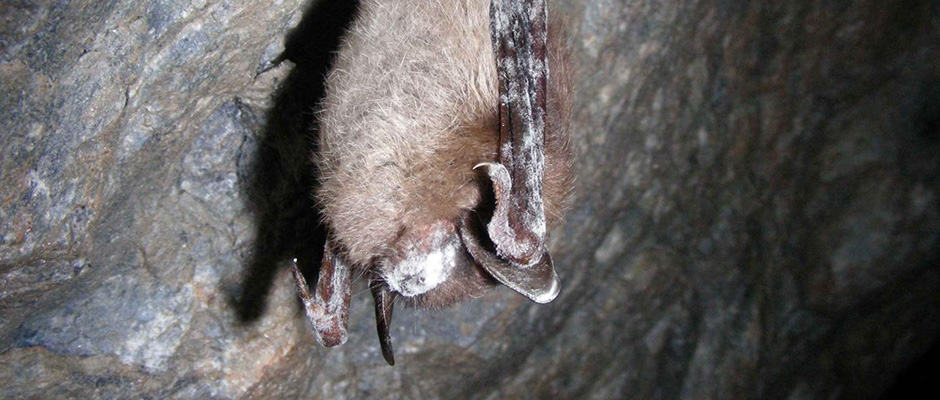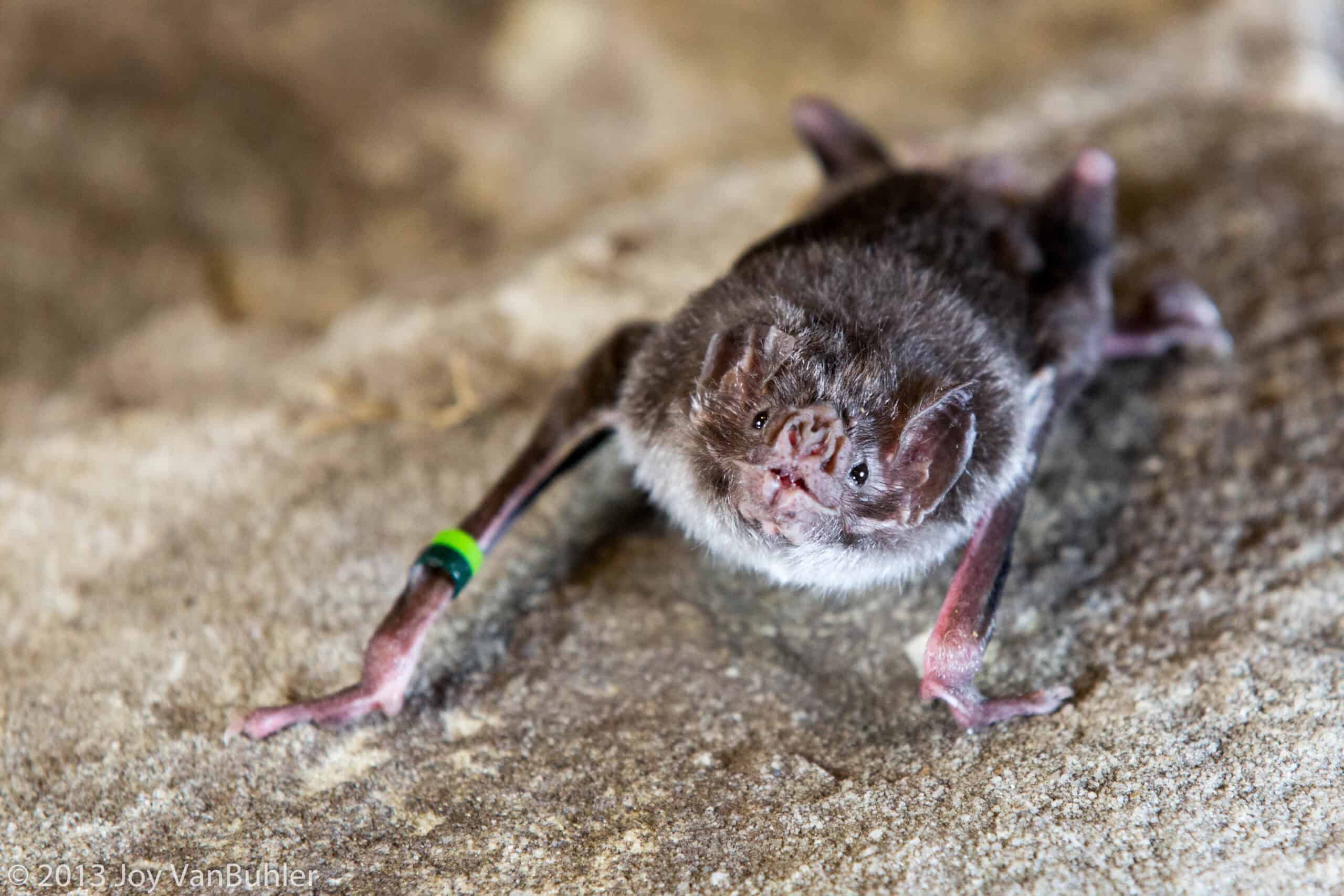Share this article
Natural Yeast Byproduct Inhibits White-Nose Syndrome
Researchers may have found a natural way to treat white-nose syndrome in bats, according to a new study.
In a paper published in the journal Mycopathologia, researchers report that a compound produced by a yeast microbe that occurs in caves inhibits the growth of the fungus which causes white-nose syndrome (WNS) — Pseudogymnoascus destructans. WNS has devastated bat populations in North America, killing millions of bats. The researchers say that not only is it possible that a treatment that uses this compound could inhibit the fungus, but the treatment may minimize disruption to cave ecosystems, since it is naturally found in them.
Daniel Raudabaugh, a doctoral student at the University of Illinois, Urbana, and the first author of the study, was investigating the microbe as a side project while studying a deadly snake fungus, he said. “I wanted to look at cave isolates that were collected and see if there were any microbes that potentially inhibit P. destructans,” Raudabaugh said.
Raudabaugh and his adviser, Illinois Natural History Survey mycologist Andrew Miller found that high concentrations of trans, trans-farnesol (tt-farnesol), produced by the yeast, Candida albicans, can inhibit the WNS fungus. The yeast commonly occurs in the intestines of humans and other species. Many Candida species are already found in caves that bats hibernate in as well as on healthy, hibernating bats themselves, suggesting that the compound is unlikely to harm the bats or damage sensitive cave ecosystems.
They tested different concentrations of tt-farnsol in the laboratory on growth of the white-nose fungus, examining 10 North American Pseudogymnoascus isolates and two P. destructans isolates. The compound had more of an effect on P. destructans than the other isolates. “If you spray the chemical at 50 micromolar, there is a greater effect on P. destructans than on the other 10 isolates,” Raudabaugh said. “In general, P. destructans had the most sensitive response.”
The compound’s inhibitory effect, however, depended on using just the right concentration of tt-farnesol. Using too much will affect native species. “This was the initial step,” Raudabaugh said. “We know that the compound works great, but we need to conduct more trials.”
Raudabaugh said that while it is possible to use this chemical as a spray to treat bats, there is a possibility that Candida species could provide bats with the necessary treatment. This research might also provide insight into why European bats survive the disease better, according to the researchers. “Several million bats have died of white-nose syndrome in the U.S., but European bats appear to survive the infection better,” Miller said, in a press release. “It is possible that the microbial makeup of European caves plays a role in bat survival there.”
However, Raudabaugh said that he would like to find native Candida species with the right levels of tt-farnsol because spraying the chemical is not the goal. “We would like to find a natural Candida species that produces the correct concentrations of tt-farnesol.”
This, he said, is “quite possible” since there are Candida species that produce up to 58.5 micromolar concentrations of tt-farnesol, which is enough to inhibit the fungus.
Header Image:
A little brown bat (Myotis lucifugus) found in a mine in Vermont shows signs of white-nose syndrome. In a recently published study, researchers at the University of Illinois found that a naturally occurring compound found in caves inhibits the growth of the fungus that causes white-nose syndrome in bats.
Image Credit: Moriarty Marvin, U.S. Fish and Wildlife Service








